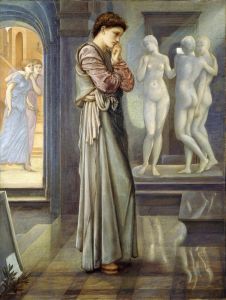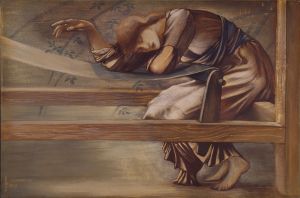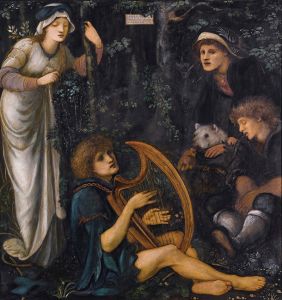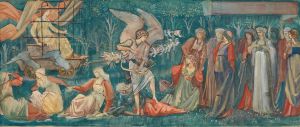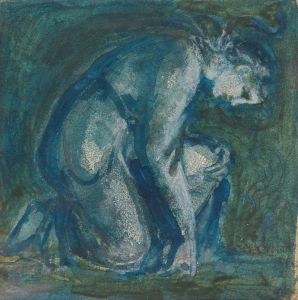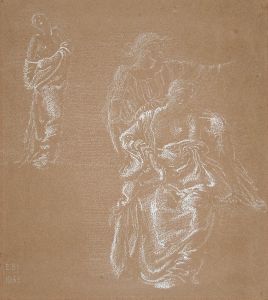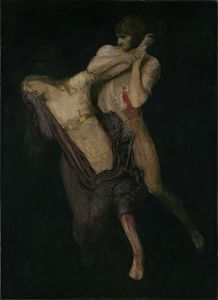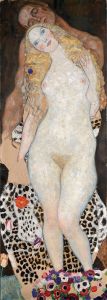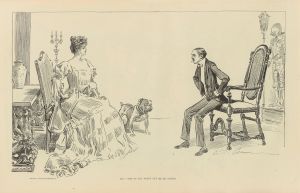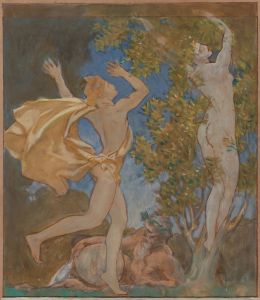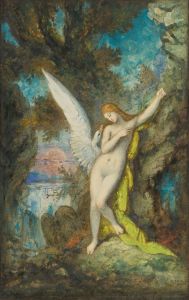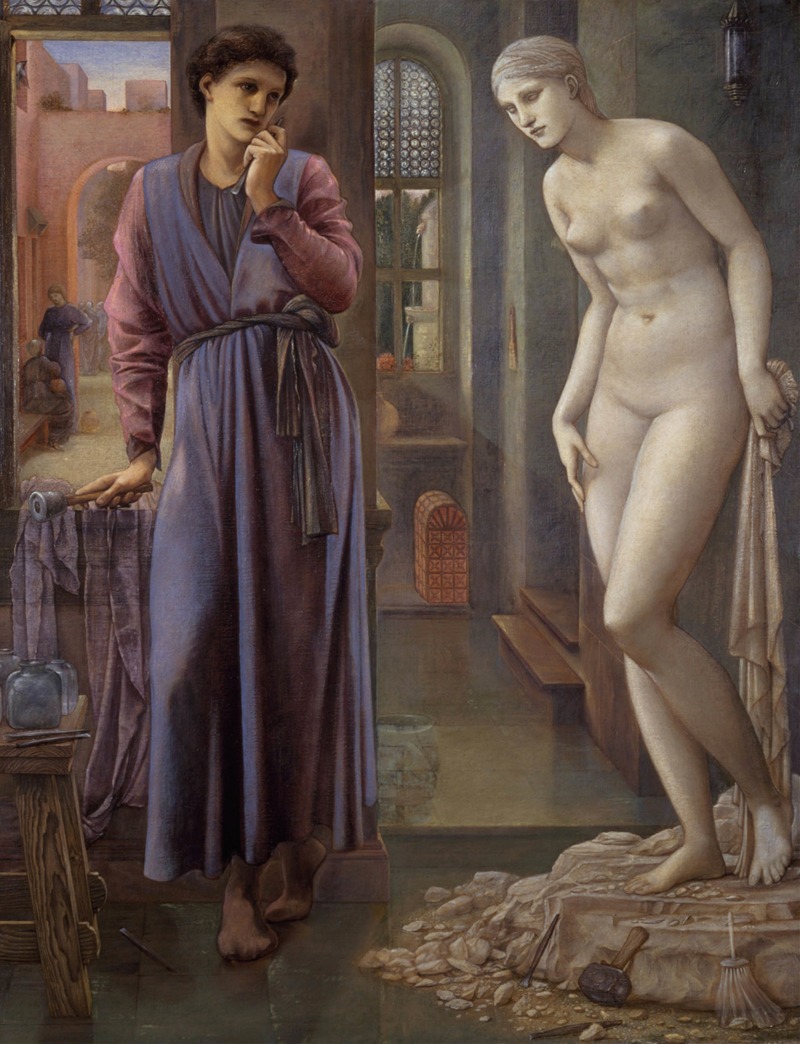
Pygmalion And The Image – The Hand Refrains
A hand-painted replica of Sir Edward Coley Burne-Jones’s masterpiece Pygmalion And The Image – The Hand Refrains, meticulously crafted by professional artists to capture the true essence of the original. Each piece is created with museum-quality canvas and rare mineral pigments, carefully painted by experienced artists with delicate brushstrokes and rich, layered colors to perfectly recreate the texture of the original artwork. Unlike machine-printed reproductions, this hand-painted version brings the painting to life, infused with the artist’s emotions and skill in every stroke. Whether for personal collection or home decoration, it instantly elevates the artistic atmosphere of any space.
Sir Edward Coley Burne-Jones was a prominent British artist associated with the Pre-Raphaelite Brotherhood, a movement that sought to return to the detail, intense colors, and complex compositions of Quattrocento Italian art. Among his notable works is the series of paintings titled "Pygmalion and the Image," which includes the piece "The Hand Refrains." This series, created between 1868 and 1870, is based on the myth of Pygmalion from Ovid's "Metamorphoses."
The myth of Pygmalion tells the story of a sculptor who falls in love with a statue he has carved. Moved by his devotion, the goddess Venus brings the statue to life. Burne-Jones's series captures various moments of this narrative, with "The Hand Refrains" depicting the moment of hesitation and awe as Pygmalion steps back, overwhelmed by the beauty of his creation.
Burne-Jones's interpretation of the Pygmalion myth is characterized by his signature style, which combines elements of medievalism with a dreamlike quality. The painting "The Hand Refrains" showcases his meticulous attention to detail and his ability to convey emotion through the figures' expressions and gestures. The composition is carefully balanced, with Pygmalion's figure positioned in a way that suggests both admiration and restraint, emphasizing the transformative power of art and love.
The color palette of "The Hand Refrains" is typical of Burne-Jones's work, featuring soft, muted tones that create an ethereal atmosphere. The use of light and shadow adds depth to the scene, highlighting the delicate features of the statue and the contemplative expression of Pygmalion. Burne-Jones's technique reflects his interest in the interplay between reality and imagination, a theme that resonates throughout his oeuvre.
Burne-Jones was influenced by a variety of sources, including medieval art, literature, and mythology. His fascination with these subjects is evident in "The Hand Refrains," where he combines classical themes with a romantic sensibility. The painting is not only a reflection of his artistic vision but also a commentary on the nature of creativity and the relationship between the artist and their work.
"The Hand Refrains" and the other paintings in the "Pygmalion and the Image" series were well-received during Burne-Jones's lifetime and continue to be celebrated for their beauty and emotional depth. They exemplify the ideals of the Pre-Raphaelite movement, which sought to challenge the conventions of Victorian art by embracing a more imaginative and expressive approach.
Today, Burne-Jones's work is held in high regard, and his paintings are featured in major collections around the world. "The Hand Refrains" remains a testament to his skill as a painter and his ability to capture the timeless themes of love, art, and transformation. Through this work, Burne-Jones invites viewers to contemplate the power of creativity and the enduring allure of mythological narratives.





